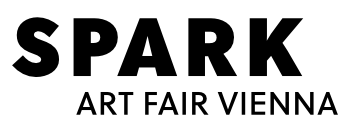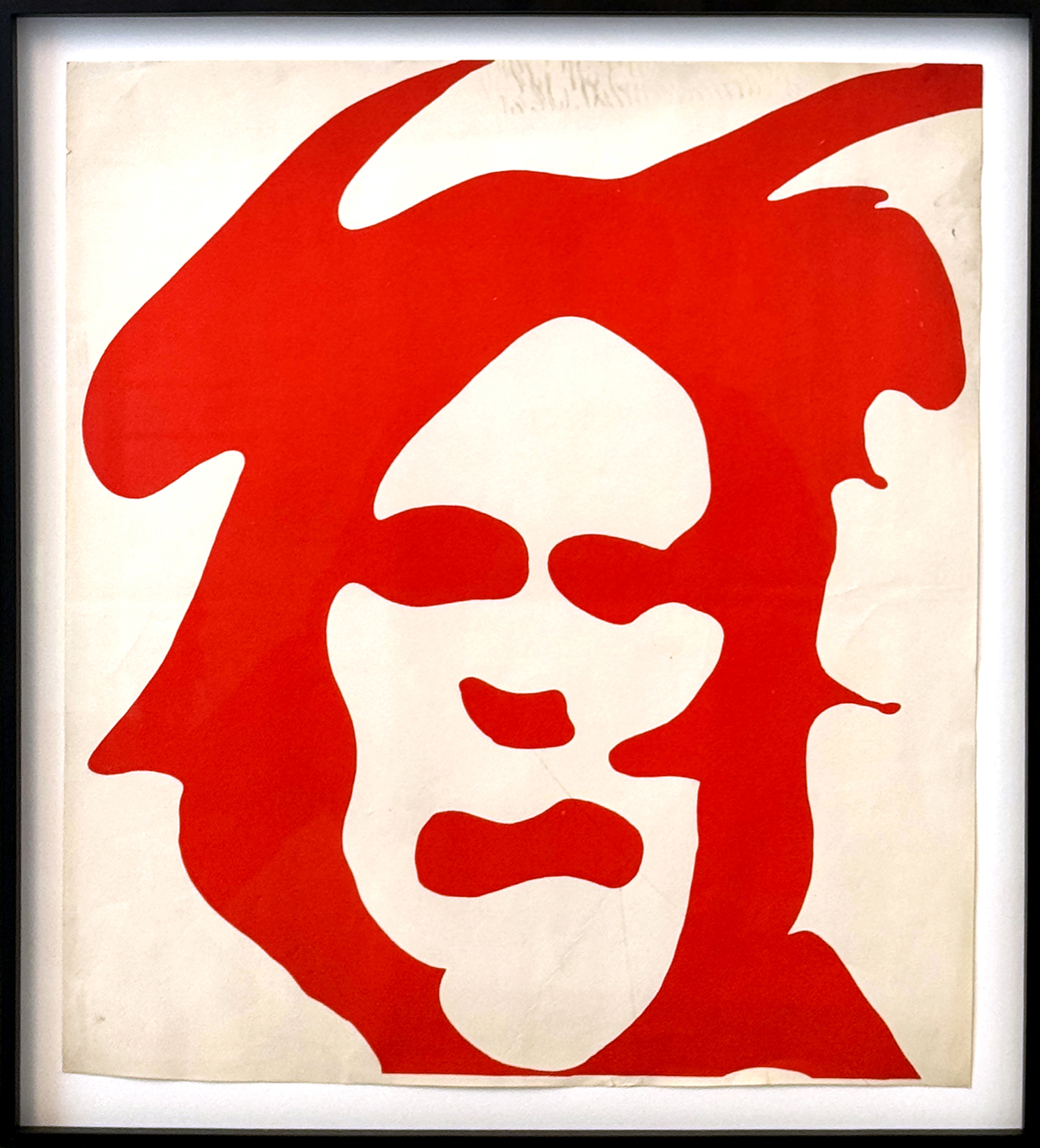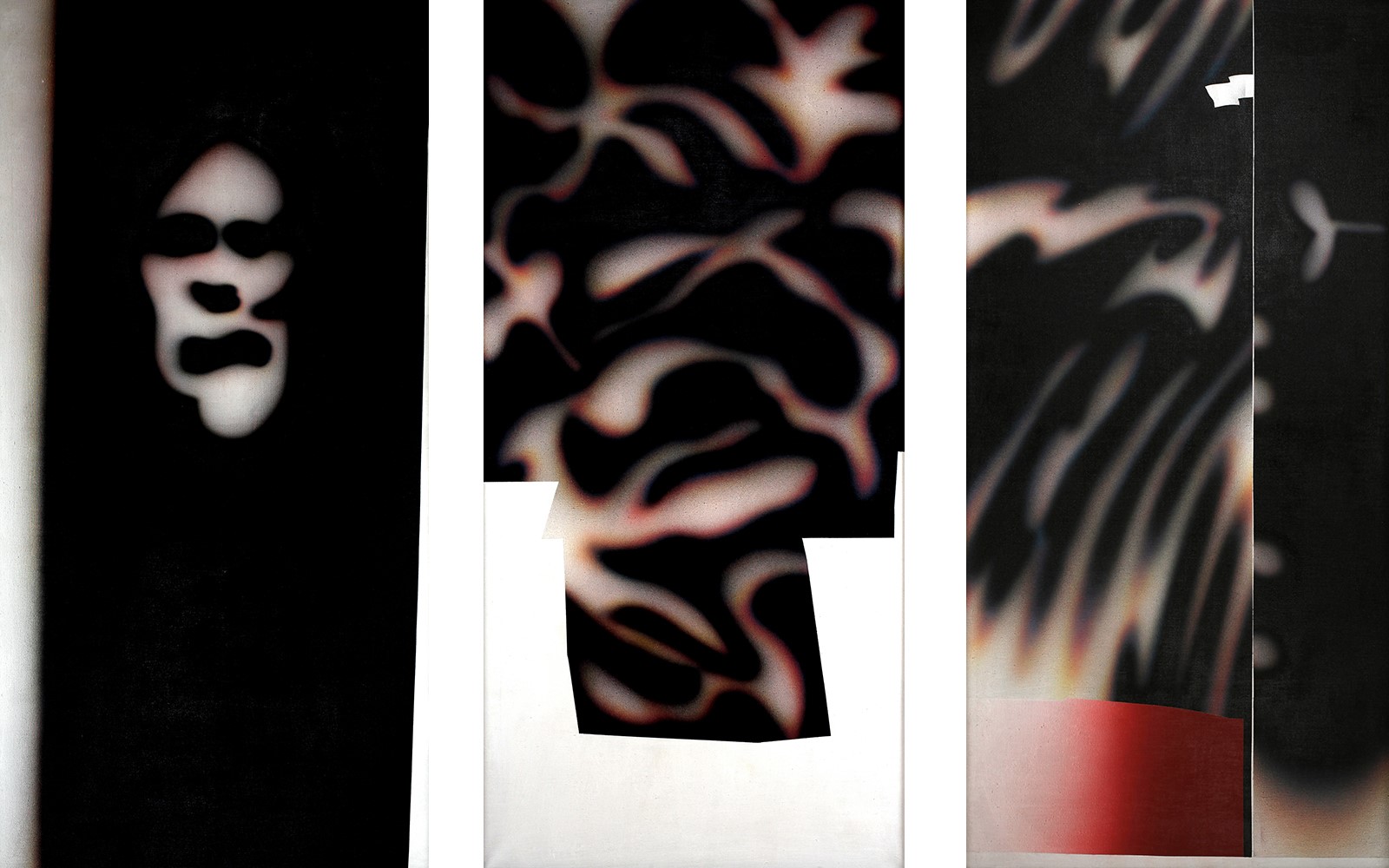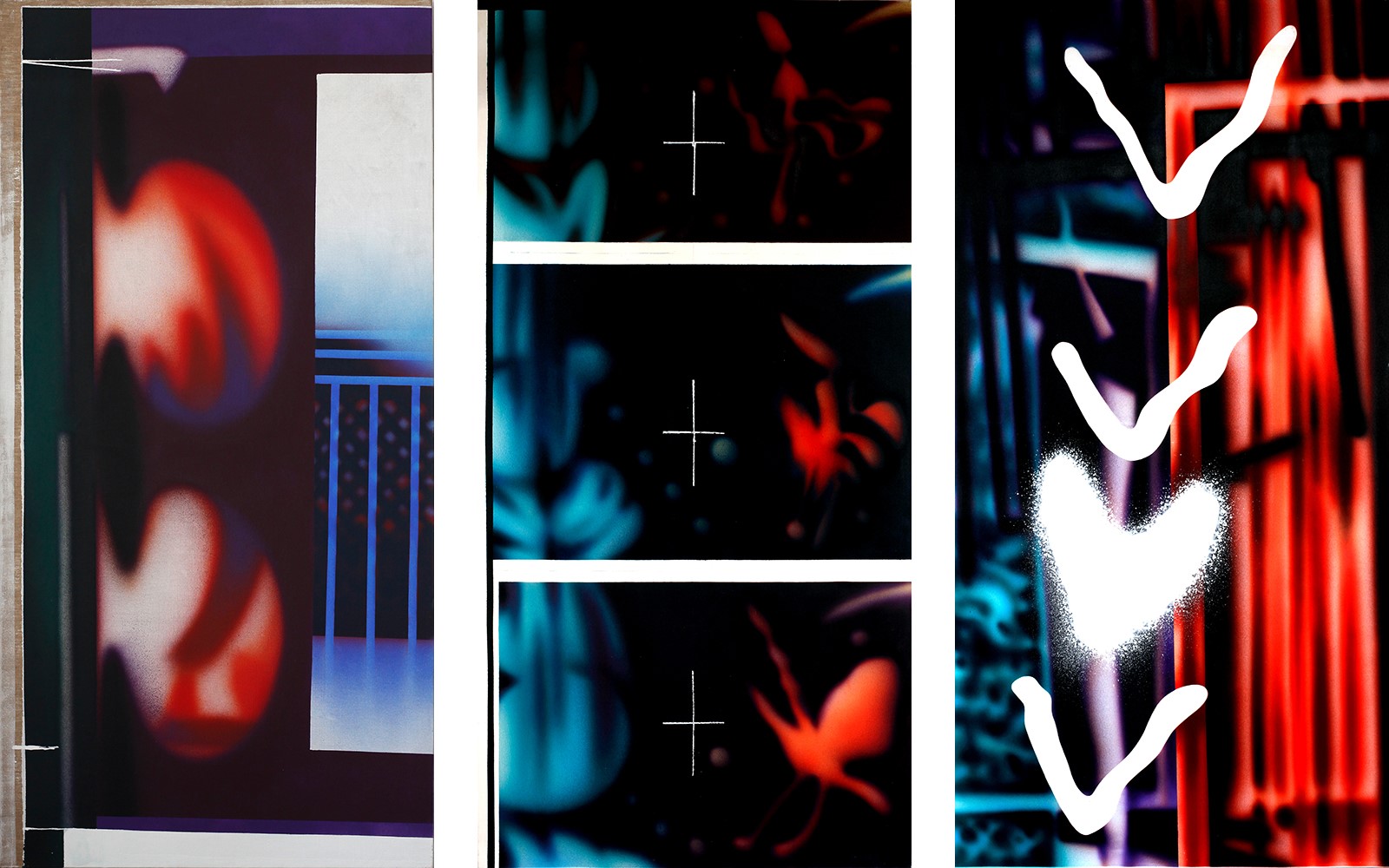Giese & Schweiger
"SCHWARZE SCHATTEN - WEISSE BALKEN" ("DIS-KETTEN")
1986
Acryl on canvas (airbrush)
each (3 paintings) 200 x 100 cm
© Giese & Schwieger, Wien
"DIS-KETTEN"
1986/1987
Acryl on canvas (airbrush)
each (3 paintings) 200 x 100 cm
© Giese & Schwieger, Wien
Robert Lettner
Robert Lettner was born in France in 1943. In captivity, because his parents were in the resistance. His parents‘ resistance was directed against Nazi Germany, while his own generation had other opponents to overcome. Lettner named and documented the resistance in many different ways.
Whether everyday objects or clearly dangerous instruments of murder, such as a deringer or a few hand grenades: everything becomes a pictorial motif and is placed in the service of a relevant (socio-)political statement on an objective level.
The fact that Robert Lettner does not resort to classical, i.e. subjective, painting techniques makes more than sense in this context. He deals with themes long before others do, and he chooses a new technique to do so. He was one of the very first to work with airbrushes, using stencils and thus fragmenting the creative process into several work steps. In search of the universality of his statement, he creates immovable facts layer by layer.
Biography
Robert Lettner was born in Elne, France, in 1943 and raised in the Gurs internment camp by an Austrian father who had fought against fascism in Spain and a mother who had fled Nazi Germany as a critical journalist from Cologne. He later grew up in Paris and Salzburg and attended the Academy of Fine Arts in Vienna. Lettner’s recalcitrant and critical nature would go on to be a constant in both his life and his art. Lettner had his first first exhibitions in the late 1960s in the legendary Griechenbeisl gallery, the focal point of the young Austrian scene. A close friend of Oswald Oberhuber’s, Lettner presented his paintings in no less than four solo shows during the 1970s at Otto Mauer’s Galerie Nächst St. Stephan. Institutional solo exhibitions at the Museum of the 20th Century (mumok), at Hamburger Kunsthalle and Vienna Secession, among others, followed in the 1980s and 1990s. He became a lecturer at the University of Applied Arts where he presided the department for Graphics and Reproduction Techniques from 1985 until 2008. Lettner’s work has most recently been shown at Albertina Modern (The Beginning…, 2020) and Hamburger Kunsthalle (Früher war schon immer jetzt. Malerei seit 1947 neu präsentiert, 2020/21) and has been acquired by or bestowed to collections as the Österreichische Galerie Belvedere, mumok – Museum Moderner Kunst Stiftung Ludwig Wien and Albertina Wien.
Giese & Schweiger
Ambition, competence and a good gut feeling have made the art dealership Giese & Schweiger, founded in 1980, the first address for Austrian painting of the 19th and 20th centuries. Significant positions from art after 1945 through to contemporary art now also create a link to contemporary art. – The quality factor and the potential to become a „masterpiece“ connect across the epochs. Exhibitions in the spacious gallery premises and participation in art fairs are regular highlights of the program. Elaborate publications, including individual presentations of important Austrian and international artists, accompany these activities.

+43 1 513 18 43 / +43 664 912 74 31
Alexander Giese
+43 1 513 18 43 / +43 664 912 74 31
Robert Lettner
Robert Lettner was born in France in 1943. In captivity, because his parents were in the resistance. His parents‘ resistance was directed against Nazi Germany, while his own generation had other opponents to overcome. Lettner named and documented the resistance in many different ways.
Whether everyday objects or clearly dangerous instruments of murder, such as a deringer or a few hand grenades: everything becomes a pictorial motif and is placed in the service of a relevant (socio-)political statement on an objective level.
The fact that Robert Lettner does not resort to classical, i.e. subjective, painting techniques makes more than sense in this context. He deals with themes long before others do, and he chooses a new technique to do so. He was one of the very first to work with airbrushes, using stencils and thus fragmenting the creative process into several work steps. In search of the universality of his statement, he creates immovable facts layer by layer.
Biography
Robert Lettner was born in Elne, France, in 1943 and raised in the Gurs internment camp by an Austrian father who had fought against fascism in Spain and a mother who had fled Nazi Germany as a critical journalist from Cologne. He later grew up in Paris and Salzburg and attended the Academy of Fine Arts in Vienna. Lettner’s recalcitrant and critical nature would go on to be a constant in both his life and his art. Lettner had his first first exhibitions in the late 1960s in the legendary Griechenbeisl gallery, the focal point of the young Austrian scene. A close friend of Oswald Oberhuber’s, Lettner presented his paintings in no less than four solo shows during the 1970s at Otto Mauer’s Galerie Nächst St. Stephan. Institutional solo exhibitions at the Museum of the 20th Century (mumok), at Hamburger Kunsthalle and Vienna Secession, among others, followed in the 1980s and 1990s. He became a lecturer at the University of Applied Arts where he presided the department for Graphics and Reproduction Techniques from 1985 until 2008. Lettner’s work has most recently been shown at Albertina Modern (The Beginning…, 2020) and Hamburger Kunsthalle (Früher war schon immer jetzt. Malerei seit 1947 neu präsentiert, 2020/21) and has been acquired by or bestowed to collections as the Österreichische Galerie Belvedere, mumok – Museum Moderner Kunst Stiftung Ludwig Wien and Albertina Wien.
Giese & Schweiger
Ambition, competence and a good gut feeling have made the art dealership Giese & Schweiger, founded in 1980, the first address for Austrian painting of the 19th and 20th centuries. Significant positions from art after 1945 through to contemporary art now also create a link to contemporary art. – The quality factor and the potential to become a „masterpiece“ connect across the epochs. Exhibitions in the spacious gallery premises and participation in art fairs are regular highlights of the program. Elaborate publications, including individual presentations of important Austrian and international artists, accompany these activities.



